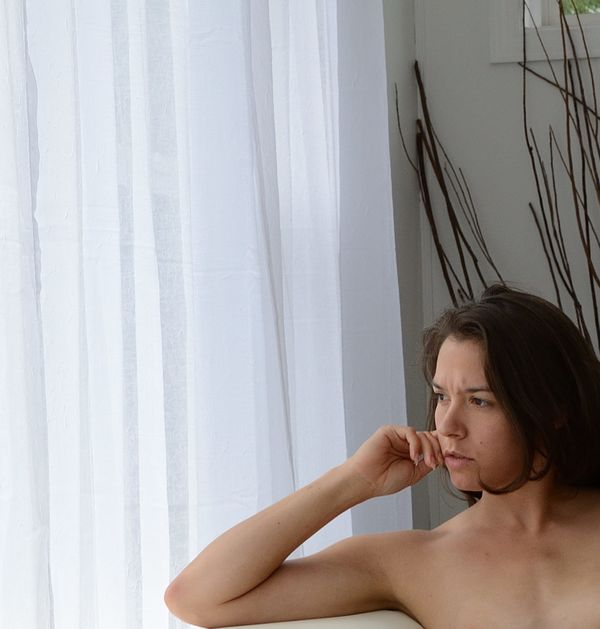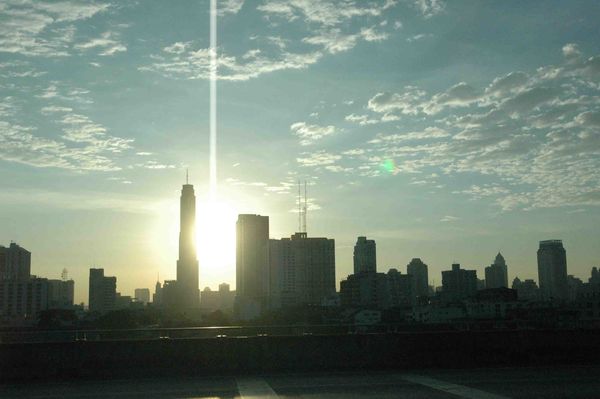Flashing points
May 14, 2017 19:29:56 #
augieg27
Loc: Central California
Hello, I'm new to photography and am recently experiencing flashing in the LCD when reviewing photos. It happens only in the white areas of the photo. It also happens with different memory cards. However, photos are OK when I download them. I changed the battery thinking that might be the culprit.
My camera is a Nikon D3300 purchased new in March 2017.
Thank you in advance for your advise.
My camera is a Nikon D3300 purchased new in March 2017.
Thank you in advance for your advise.
May 14, 2017 19:39:16 #
Your LCD display is set up to flash areas of your image that are over-exposed. I do not own a D3300, so I can't advise you for certain whether you can turn that particular feature on or off, but I'd be surprised if you couldn't. Check your manual regarding Playback, or watch here, as I'm sure someone with more familiarity with the D3300 will respond.
May 14, 2017 19:39:25 #
augieg27 wrote:
Hello, I'm new to photography and am recently experiencing flashing in the LCD when reviewing photos. It happens only in the white areas of the photo. It also happens with different memory cards. However, photos are OK when I download them. I changed the battery thinking that might be the culprit.
My camera is a Nikon D3300 purchased new in March 2017.
Thank you in advance for your advise.
My camera is a Nikon D3300 purchased new in March 2017.
Thank you in advance for your advise.
Those are commonly called Blinkys. They show the areas of the photograph that are blown out. Read through your manual to learn how to turn them off.
May 14, 2017 19:44:10 #
All you have to do is hit the up arrow on arrow button on the back of the camera.and it cycles through several different views, the blinkeys are one, others show metadata and one shows the photo only. Easy Peasy. The blinking areas, by the way are areas that are clipped or "washed out"
May 14, 2017 19:45:20 #
I have be a d3300 and as of this time have not experienced any flashing looking through my viewfinder, only the quick flash I see from the Focus point indicator. I have not used Live view very seldom, and have not experienced or viewed any "Flashes" of light thru the LCD Live view screen, so you may want to contact Nikon and hopefully get an answer to this issue. Please relay anything you learn to us here at UHH, to help any other Nikon D3300 owners that may be experiencing the same issue as you.
May 14, 2017 19:46:44 #
May 14, 2017 19:57:21 #
augieg27
Loc: Central California
Wow! I'm amazed by your prompt response. Thank you so much. I'll will try your suggestions and report back.
May 14, 2017 20:06:37 #
augieg27
Loc: Central California
Thank you sodapop, I followed your advise and problem resolved.
Thank you all for you help.
Now I can go and BBQ for my hungry family :-)
Thank you all for you help.
Now I can go and BBQ for my hungry family :-)
May 14, 2017 23:59:57 #
The photos are not OK after downloading them. The areas that were flashing have lost all detail. Here's an example of a photo shoot I did with a model. In these photos the sun was at times shining at the window. At other times clouds moved in front of the sun and reduced the intensity of the light. In the upper photo you can see the folds in the curtains. In the lower photo the intensity of the light was too great for the sensor and all detail in the curtains was lost. Not only is the detail in the curtains lost but the overexposure is spilling over to the top of the couch. There's no separation between the window and the top of the couch. She's touching the curtains in the lower photo. I cannot recover that detail, even with the RAW file. I had to crop the photos a lot. Otherwise I would need to put them in the boudoir photography section.
May 15, 2017 07:16:44 #
augieg27 wrote:
Hello, I'm new to photography and am recently experiencing flashing in the LCD when reviewing photos. It happens only in the white areas of the photo. It also happens with different memory cards. However, photos are OK when I download them. I changed the battery thinking that might be the culprit.
My camera is a Nikon D3300 purchased new in March 2017.
Thank you in advance for your advise.
My camera is a Nikon D3300 purchased new in March 2017.
Thank you in advance for your advise.
The flashing in the white areas is showing clipping, that is where you are losing data. If you look at the histogram you would see a peak at the right edge. Are you shooting JPEG? That may mean why the photo is ok when downloaded
May 15, 2017 14:27:07 #
augieg27
Loc: Central California
Thank you CO and mborn for your input. What am I doing wrong and how can I correct it? And yes i'm shooting JPEG for now until I learn how to use RAW.
Photo Bee 1, amazing photos, Hope I can do that some time in the future. What camera, lens and settings?
Photo Bee 1, amazing photos, Hope I can do that some time in the future. What camera, lens and settings?
May 15, 2017 14:40:01 #
augieg27 wrote:
Thank you CO and mborn for your input. What am I doing wrong and how can I correct it? And yes i'm shooting JPEG for now until I learn how to use RAW.
Photo Bee 1, amazing photos, Hope I can do that some time in the future. What camera, lens and settings?
Photo Bee 1, amazing photos, Hope I can do that some time in the future. What camera, lens and settings?
Thanks for the kind statement. I use different cameras, settings, and lenses. You need to understand the exposure triangle and how to intact between Speed, f/stop and ISO. I would recommend Bryan Peterson's book on understanding exposure. Also, understand the differences in the various modes on your camera: Auto, Manual, Aperture Priority, Shutter Priority etc
May 15, 2017 15:57:53 #
amfoto1
Loc: San Jose, Calif. USA
augieg27 wrote:
Hello, I'm new to photography and am recently experiencing flashing in the LCD when reviewing photos. It happens only in the white areas of the photo. It also happens with different memory cards. However, photos are OK when I download them. I changed the battery thinking that might be the culprit.
My camera is a Nikon D3300 purchased new in March 2017.
Thank you in advance for your advise.
My camera is a Nikon D3300 purchased new in March 2017.
Thank you in advance for your advise.
Yep. Those are "blinkies".
It's a warning the camera flashes to alert you to possible over-exposure.
Emphasis on "possible" because the exposure might actually be correct and not over-exposed. If there is pure, bright white in the scene you're photographing, the camera will interpret that as [u]possible[/iu] over-exposure, even though you are doing everything correctly and the image is being exposed properly.
I'm not familiar with your particular camera, but in all DSLRs I've ever used the "blinkies" could optionally be turned off. Look for something labelled "Over-exposure warning" or "alert" in your menu, if you want to stop the "blinkies".
Your camera can display a "histogram", which is actually much better means of checking exposure, once you learn to use it. The image playback shouldn't be fully trusted, for things such as evaluating exposure accuracy. This is because the LCD monitor is strongly influenced by ambient light. The playback image will look quite different, for example, depending upon whether you are viewing it out in full sun, or in the shade, or indoors under fluorescent or tungsten lighting. Once you learn to read it and understand what it's telling you, the histogram is a much more accurate and useful form of feedback about exposure.
May 15, 2017 18:56:03 #
augieg27 wrote:
Thank you CO and mborn for your input. What am I doing wrong and how can I correct it? And yes i'm shooting JPEG for now until I learn how to use RAW.
Photo Bee 1, amazing photos, Hope I can do that some time in the future. What camera, lens and settings?
Photo Bee 1, amazing photos, Hope I can do that some time in the future. What camera, lens and settings?
The sensor could not record the wide range of light levels in the scene - its dynamic range is not wide enough. In the two photos I posted above, there were some clouds moving across the sky. At times, full sunlight was hitting the window causing overexposure. At other times, clouds moved in front of the sun. The clouds acted like a giant softbox and both diffused and reduced the light intensity. One needs to find a way to reduce the wide range of light intensities in the scene. One way to get around the limited dynamic range of the sensor is to do high dynamic range photography (HDR). It involves bracketing three or more photos. If doing three exposures, one is properly exposed, one underexposed, and one overexposed. Those exposures are then merged in HDR software.
You can see it in shadow areas also. Sometimes shadow areas will "block up". The photographer may see details in shadow areas while at the scene but the camera will sometimes record it as solid black.
The book "Understanding Exposure" recommended by mborn is excellent.
If there's extreme overexposure you can get blooming. The photo sites on the sensor are like tiny buckets that collect photons of light. An excessive charge can actually spill over into neighboring pixels causing overexposure there. They have developed features in sensors that attempt to "drain away" the excessive charge.
If you want to reply, then register here. Registration is free and your account is created instantly, so you can post right away.









